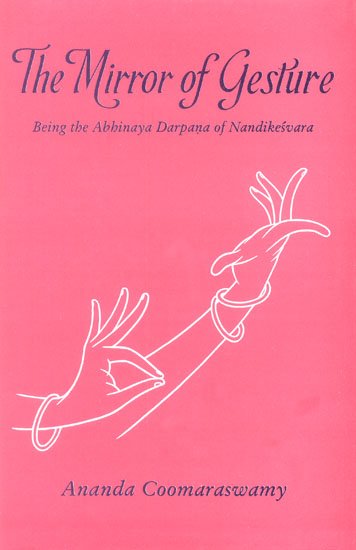Abhinaya-darpana (English)
by Ananda Coomaraswamy | 1917 | 16,981 words | ISBN-13: 9788121500210
The English translation of the Abhinaya-darpana (“the mirror of gesture”) by Nandikeshvara: an encyclopedic manual of the art of gesticulation. It belongs to a wide range of literature known as Natya-shastra: the ancient Indian art of dramatic performance, theatrics, dance and music. The Abhinaya Darpana is an abridgement of the Bharatarnava, a m...
Chapter 4 - Gesture (abhinaya)
Gesture is the principal theme of what is here related.
The root ni with the prefix abhi implies exposition, and the word abhinaya is used in this sense. According to another book (granthāntare), abhinaya is so called because it evokes flavour (rasa) in the audience. There are three kinds of gesture:[1] bodily, vocal, and ornamental (āṅgika, vācika, āhārya), besides the pure, passionate, and dark (sāttvika, etc.). Here we are only concerned with aṅgikābhinaya, “Exposition by means of the gestures of the body and limbs.”
The three elements of bodily gesture are the limbs, parts of the body, and features (anga, pratyaṅga, upāṅga).
In Aṅgābhinaya the head, hands, arm-pits, sides, waist, and feet, these six, and some say also the neck, are called the limbs.
In Pratyaṅgābhinaya the shoulders, shoulder-blades, arms, back, stomach, thighs and calves, some say also three others, the wrists, knees, and elbows, are the parts of the body.
In Upāṅgābhinaya the eyes, eyelids, pupils, cheeks, nose, jaw, the lips, teeth, tongue, chin, face, these eleven are the features. Beside these are the accessories, such as the heel, ankle, fingers and toes, and palms, which I mention according to the old books.
Only such as are useful in dancing will be described. The classification of Heads will be given first, then that of the Glances, Neck, Hands, and Actions, and from these five will appear the resulting movements.
Footnotes and references:
[1]:
Observe that abhinaya strictly speaking means “expression” whether by gesture, singing, or costume. In the present work it is expression by gesture which is considered, and on this account the term abhinaya has been rendered by “gesture” throughout.
